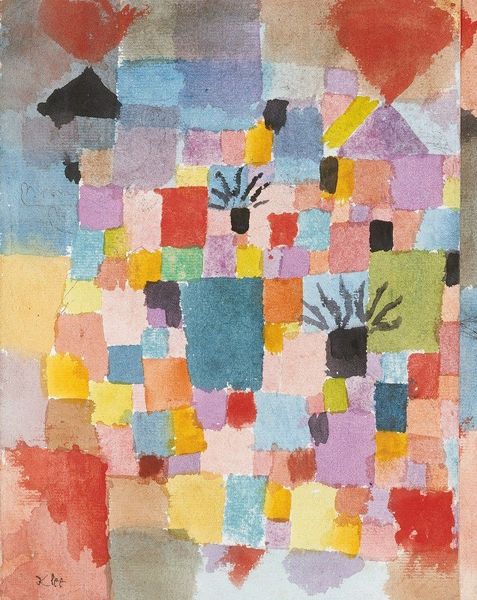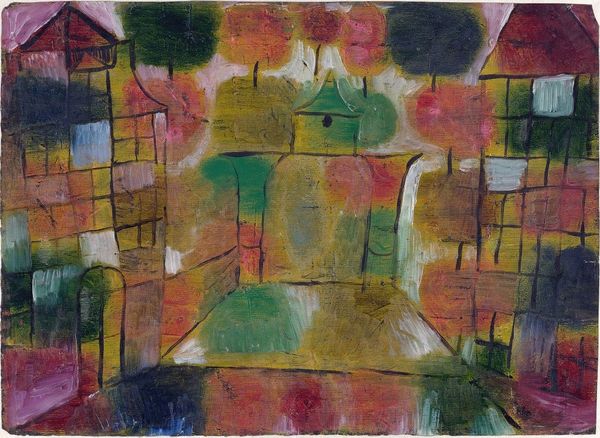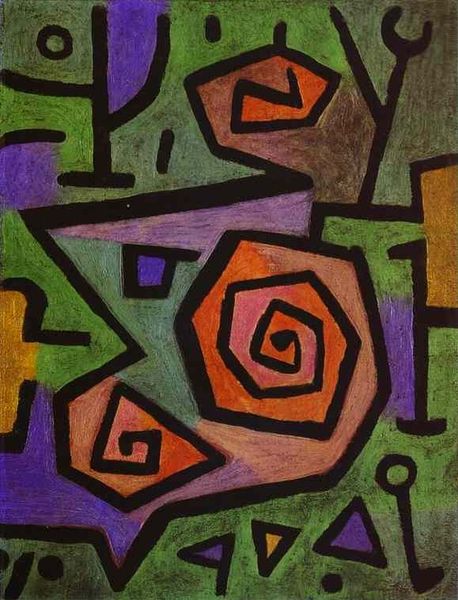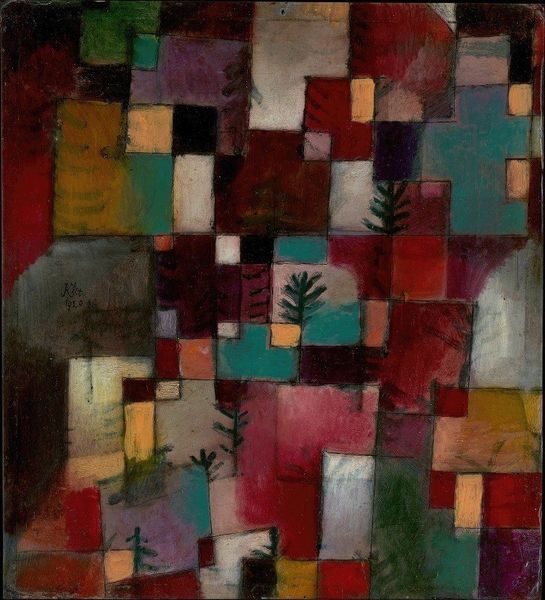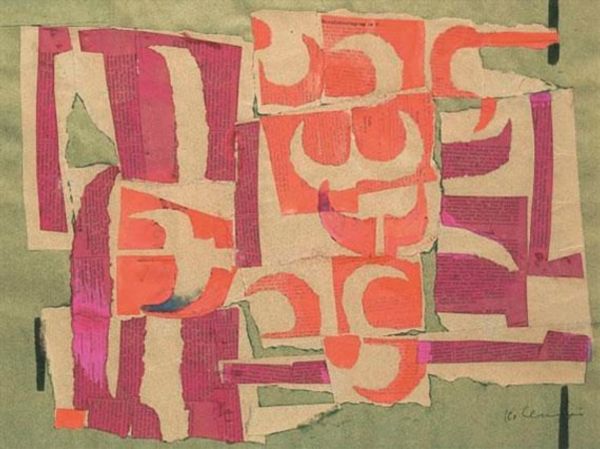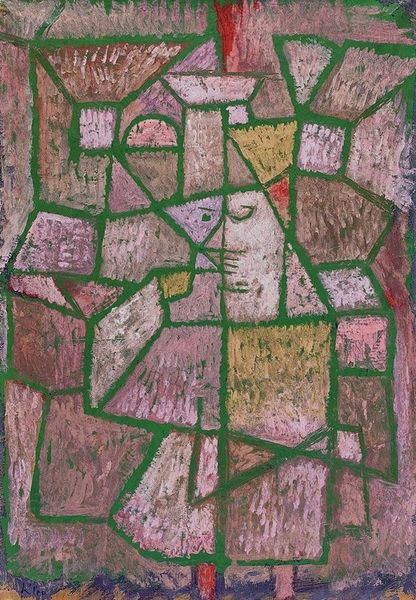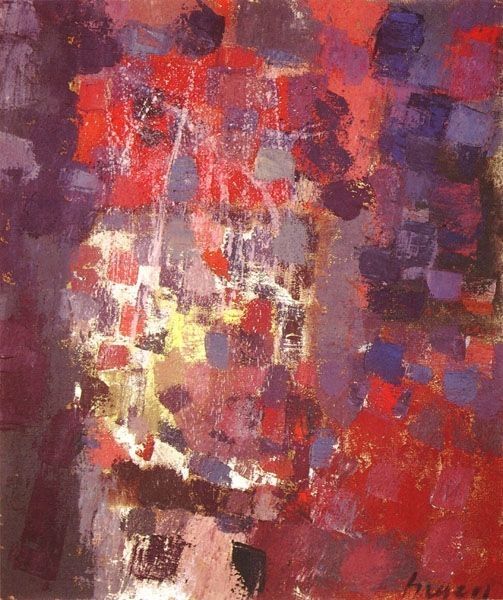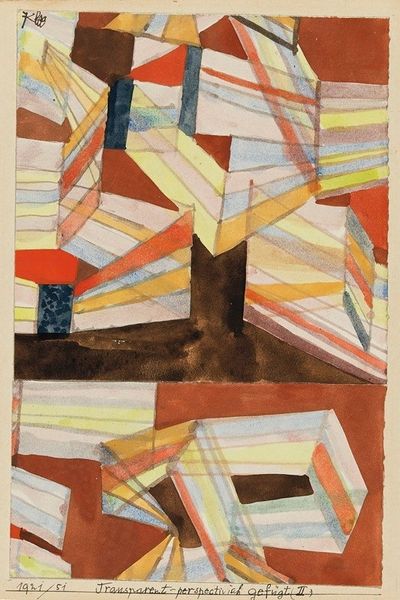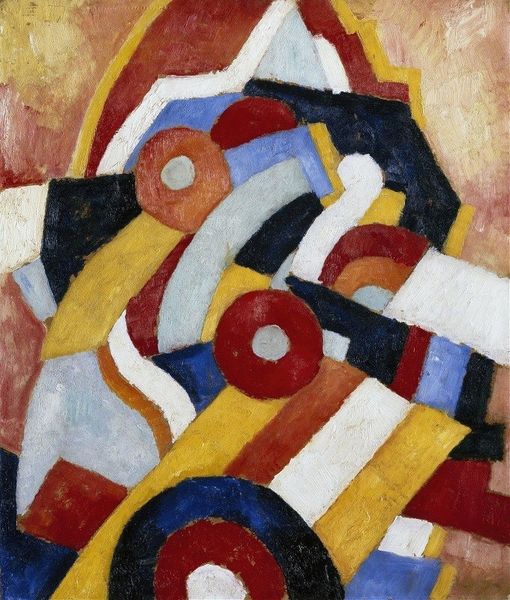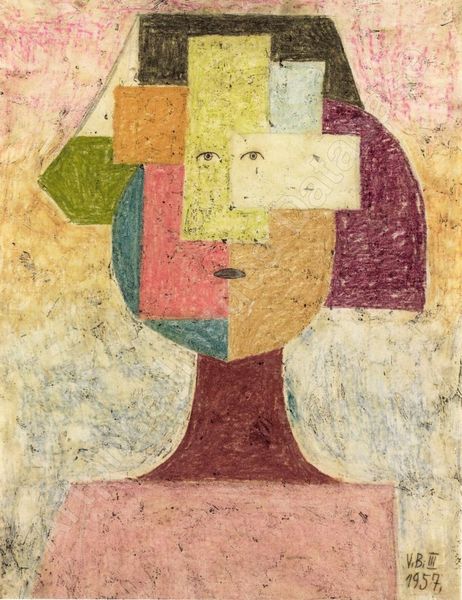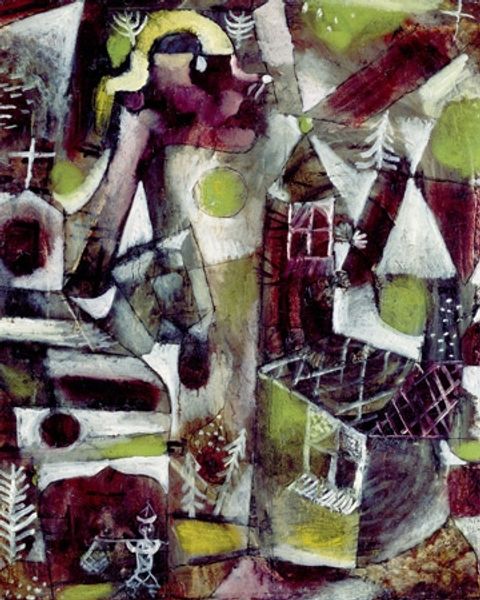
tempera, painting, paper, ink
#
abstract painting
#
tempera
#
painting
#
house
#
paper
#
handmade artwork painting
#
ink
#
pink
#
geometric
#
expressionism
#
abstraction
#
symbolism
#
cityscape
#
painting art
#
modernism
#
building
Dimensions: 49 x 42.5 cm
Copyright: Public domain
Curator: Paul Klee's "Rose Garden," created in 1920, a tempera, ink, and painting on paper, offers us an intriguing perspective. Editor: It does; my immediate sense is that it’s an almost playful composition. The hues and forms are both inviting and enigmatic. There's a fragmented quality. Curator: Fragmentation indeed, and a powerful layering of symbols. The rose, repeated throughout, often represents love, but also secrecy, depending on its cultural context. Consider also the geometrical layout reminiscent of architectural mapping. Does this echo a utopian or a dystopian landscape for you? Editor: The geometry is striking. Notice how the houses or building-like structures, if we can call them that, are broken down into simple geometric forms—triangles, rectangles, and squares. These, combined with the overall pink tonality, make the roses feel less about secrecy and more about... sweetness, almost to the point of oversaturation. Curator: Oversaturation of sweetness could itself be interpreted. The roses almost seem to watch the dwellings. Their stylized rendering connects to art nouveau and symbolist ideas of organic life interweaving with human constructs and reflecting deeper truths. Editor: True. And in the organization of forms we see modernism asserting its influence as Klee deconstructs our typical understanding of space into a constellation of visual segments, that don’t cohere but rather act as aesthetic annotations. The city itself is translated into shape, line, color, creating tension between the symbolic roses, architectural suggestions and non-representation. Curator: That tension is what I find most captivating. Klee asks, how do we visually codify memory? What emblems persist? Editor: Indeed, it makes you rethink the conventional structure, but not in order to abandon them, more so to embrace them. What begins as something orderly becomes a very lively abstract configuration of planes. Curator: And that's what makes his "Rose Garden" endure as both a symbolic ecosystem and a feat of deconstruction. Editor: Well observed; its success definitely resides in its visual syntax rather than an adherence to tradition.
Comments
No comments
Be the first to comment and join the conversation on the ultimate creative platform.
